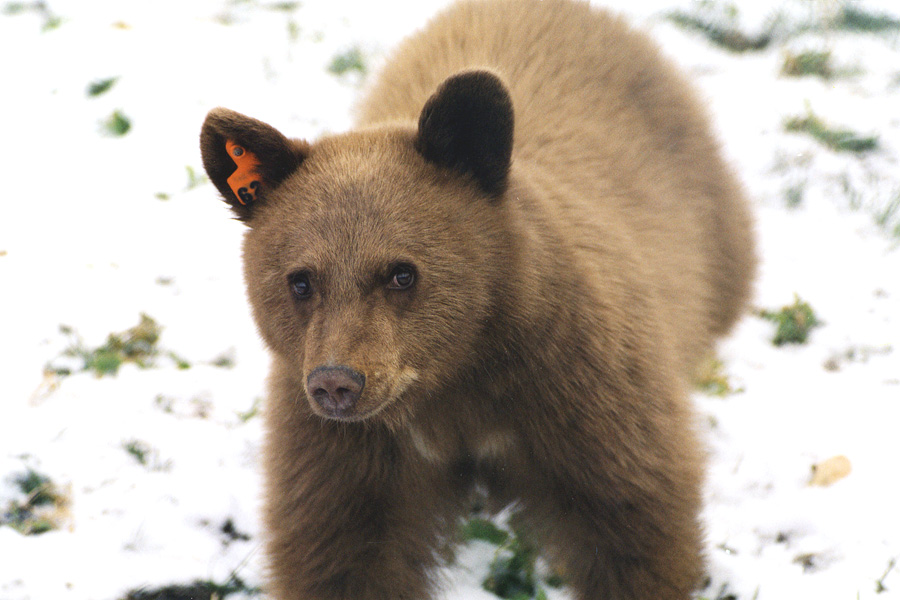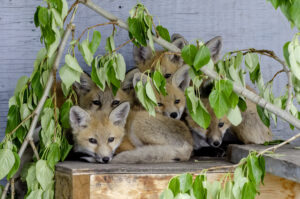by Kendra Thomas
Did you know that not all black bears are black? Black bears, or Ursus americanus, can be found in a wide range of colours – ranging from black, brown and cinnamon to blonde, white and grey.1 This variation in colours is due to a natural pigment in the bear’s skin and fur.2 This pigment is called melanin2, and it’s the same pigment that gives humans their unique hair and skin colours!3 Melanin levels in black bears are determined by genetics.2
Scientists have long understood that colour variations, otherwise known as colour morphs, in small mammals are an evolutionary method of hiding from predators.2 However, they are just beginning to understand why larger animals, such as the black bear, have colour variations2. Scientists had a few hypotheses regarding the evolutionary purpose of colour morphs in black bears. One theory was that the colour morphs in black bears could assist in thermoregulation2, the mechanism that mammals use to maintain their body temperature.4 Scientists also considered that perhaps there
was an evolutionary advantage to black bears mimicking the colouring of grizzly bears.2 A recent study suggests that the most likely evolutionary purpose of colour morphs in black bears is crypsis – a word that means “to avoid detection by blending into the background.”5 Evolutionary colour variations as a means of avoiding predation is a common phenomenon in the animal kingdom.2,5 Colour morphs are especially valuable for black bear cubs, who may become prey for cougars, wolves, coyotes, grizzly bears, and other black bears.6

Next time you see a bear, take a moment to look at its surroundings. It is more common to see bears with black and brown colouring in forested areas where they can easily blend into the dark and shady wooded areas.7 Conversely, bears with lightly coloured fur are most common in sunny and exposed places, where their lightly coloured fur helps them blend into the landscape.7
Did you know that AIWC rescues, rehabilitates and releases injured and orphaned black bear cubs? To support these cubs, please consider donating to AIWC today!
Footnotes
- Parks Canada. “Bear Basics.” Bears in the mountain national parks, November 26, 2022. https://parks.canada.ca/pn-np/mtn/ours-bears/generaux-basics.
- Puckett, E., et al. “Genetic Architecture and Evolution of Color Variation in American Black Bears.” Current Biology 33, no. 1 (January 9, 2023): 86–97.
- The Nemours Foundation. “What’s Melanin? (For Kids) – Nemours Kidshealth.” KidsHealth. Accessed June 4, 2023. https://kidshealth.org/en/kids/word-melanin.html#:~:text=Ever%20wonder%20where%20your%20skin,the%20more%20mel anin%20you%20have.
- National Institute for Biotechnology Information. “Physiology and Temperature Regulation” National Institute for Health, May 2022.
https://www.ncbi.nlm.nih.gov/books/NBK507838/. - Brakefield, P M. “Crypsis.” Crypsis – an overview | ScienceDirect Topics, 2009. https://www.sciencedirect.com/topics/agricultural-and-biological-
sciences/crypsis#:~:text=Olfactory%20camouflage%20or%20crypsis%20is,unlocatable%20by%20means%20of%20olfaction. - U.S. National Parks Service. American black bear (U.S. National Park Service), July 2021. https://www.nps.gov/articles/000/american-black-bear.htm.
- BearWise. “What Color Is a Black Bear?” BearWise, February 14, 2020. https://bearwise.org/faq-items/what-color-is-a-black-
bear/#:~:text=No%20one%20knows%20for%20sure,fur%20helps%20them%20bl
end%20in.






